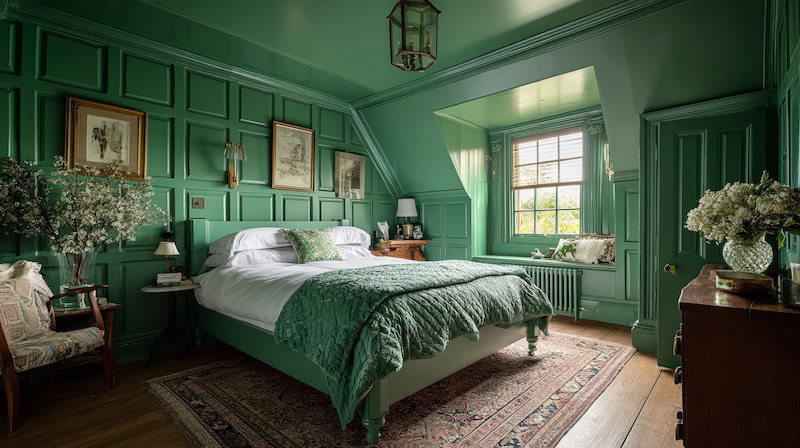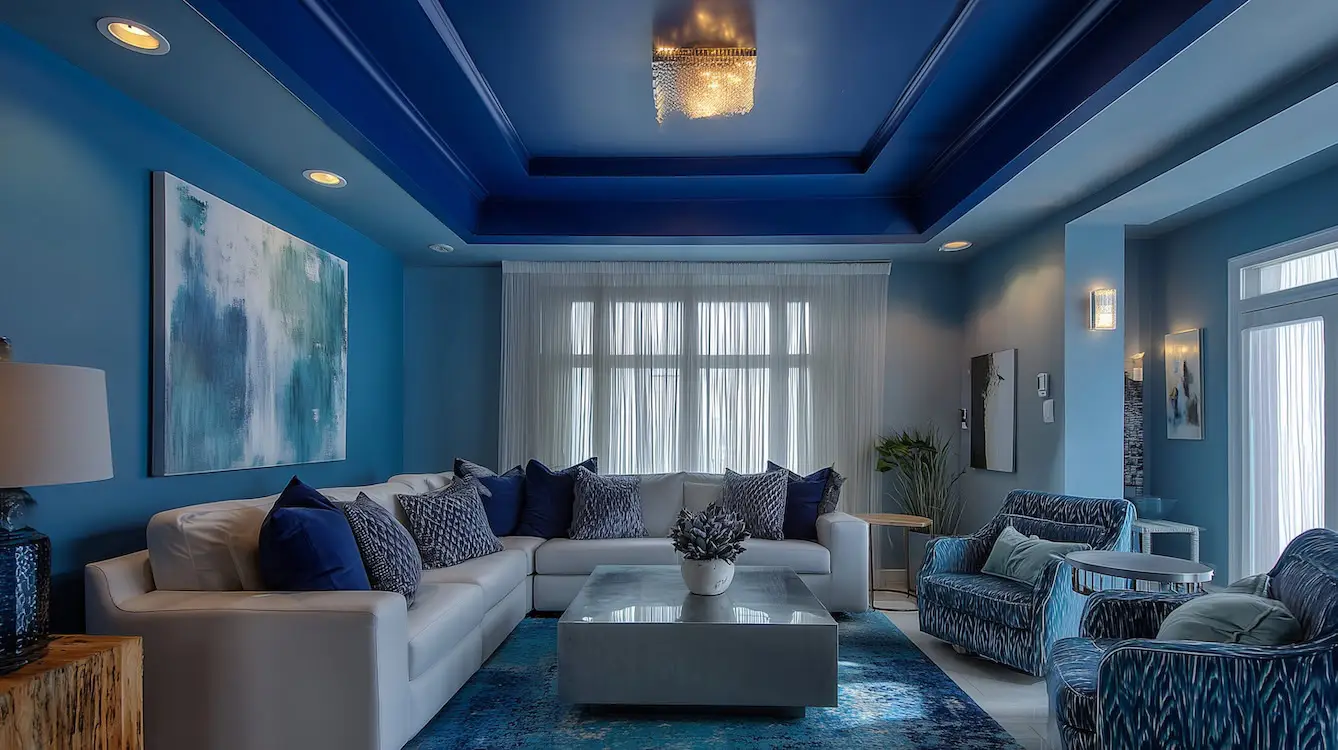A fresh coat of paint can do more than update a room; it can completely change its atmosphere. Whether you want to make a small bedroom feel spacious, add warmth to a neutral room, or emphasise architectural details, clever painting techniques can make all the difference. From colour capping to colour drenching and softer ombré effects, these ideas will help you add depth, character, and personality to every corner of your home. Let’s explore ten painting techniques to transform your interiors.

Ten Colour Interior Painting Techniques
1. Colour Capping: The current interior painting trend where the wall colour extends onto the ceiling in a darker or deeper shade from the same palette. This creates a gentle gradient that draws the eye upward, making rooms appear taller and more spacious. By blending the ceiling into the design rather than leaving it white, the overall look feels cohesive, modern, and beautifully layered. Ideal for confident decorators seeking a bespoke, design-led finish.
2. Colour Drenching: This popular technique covers everything, including walls, ceilings, skirting, doors and radiators, in one cohesive shade. The effect is enveloping, creating a sense of calm unity. Deep greens, charcoals, and rust tones work beautifully for a moody, sophisticated look. There’s no cutting in, making it one of the easiest techniques to try. Best for beginners who want a bold, straightforward approach.
3. Half Walls: A straightforward yet effective idea that involves painting only the lower half of your walls. This can create the look of panelling and shield high-traffic areas from scuffs. Try soft pinks and greys for a modern finish, or use navy and cream for a classic touch. Perfect for DIY decorators looking for a quick update.
4. Two-Tone Walls: Try pairing two complementary colours side by side or vertically down a wall. It’s a clever way to separate zones in an open-plan layout or bring a modern twist to a plain room. Best suited for creative homeowners who enjoy experimenting with colour balance.
5. Ceiling Contrast: The ceiling is often referred to as the fifth wall for a reason; it’s a powerful design feature. Painting it in a darker shade adds intimacy and warmth, while a pale colour enhances brightness and creates a sense of space. Ideal for confident painters looking to alter a room’s proportions.
6. Colour Contrast with White Trim: A timeless approach that balances colour and brightness. The walls are painted in a chosen shade while the ceiling, skirting boards and doors remain crisp white. This classic contrast keeps the room feeling light and open, allowing the wall colour to stand out. Best for anyone who loves colour but wants to maintain a fresh, airy feel.
7. Arch and Shape Painting: Painted arches and shapes add an artistic, personalised touch. They can frame artwork, emphasise furniture, or bring charm to walls that feel too bare. Ideal for creative DIY enthusiasts or renters looking for a fun, low-cost feature.
8. Ombré or Gradient Effect: Blend from dark to light to achieve a dreamy, fluid finish that works exceptionally well in bedrooms or bathrooms. This technique gives walls a hand-painted, artistic feel that wallpaper can’t match. Best suited for artistic decorators confident in blending.
9. Stripes and Panelling Illusions: Use vertical stripes to raise the ceiling or horizontal ones to make the room appear wider. Paint can also mimic decorative wall panelling, ideal for achieving a high-end look on a budget. Best suited for detail-oriented painters who enjoy precision work.
10. Textured Finishes: Specialist finishes, such as limewash or Venetian plaster, add texture, depth, and a tactile quality. These surfaces bring a soft, luxurious movement to walls, especially when combined with natural materials like linen or wood. Ideal for experienced decorators or those working with professionals.
Final Notes On Interior Painting Techniques
A little imagination with paint goes a long way. These techniques demonstrate that walls don’t have to be plain or predictable. By experimenting with tone, proportion, and texture, you can completely transform how a room feels, from relaxed and soothing to bold and expressive. The best part is that a paintbrush or roller is one of the easiest and most affordable design tools you’ll ever own.
Frequently Asked Questions About Interior Paint Styles
What is the difference between colour capping and half walls?
Colour capping usually stops below the ceiling or at a picture rail, whereas half walls sit lower, often around chair height. This creates a different sense of proportion and visual balance.
How can I ensure bold paint choices don’t dominate my room?
Test large swatches in various lighting conditions before making a decision. If unsure, balance bold shades with a mix of natural materials, soft textiles, and lighter accessories.
Is colour drenching suitable for small spaces?
Yes, using one consistent colour across walls and ceilings can make a small room seem larger by removing sharp visual breaks.
Can I create arches or shapes without freehand painting?
Yes. Use masking tape or a cardboard template for sharp edges. Many decorators also use flexible stencils or laser levels for accuracy.
Which finishes work best for textured paint effects?
Limewash provides a soft, chalky texture ideal for rustic or bohemian rooms. Venetian plaster yields a smooth, polished surface that is suitable for both elegant and modern interiors.
We like these articles:Ideal Home: Colour capping and House Beautiful: Sophie Robinson on colour drenching. You might also enjoy this article: Ten ideas for creating a cosier home this winter.
